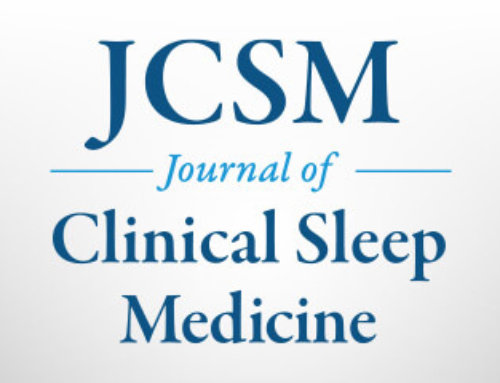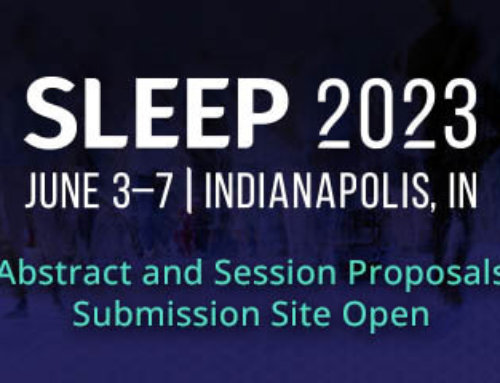RETRACTION NOTICE:
Updated Jan. 13, 2010
At the Request of the Corresponding (First) Author, the Editors of SLEEP are Retracting the Following Paper and Erratum:
Guilleminault C; Quo S; Huynk N; Li K. Orthodontic expansion treatment and adenotonsillectomy in the treatment of obstructive sleep apnea in prepubertal children. Sleep 2008; 31(7): 953-957.
Erratum to Guilleminault C; Quo S; Huynk N; Li K. Orthodontic expansion treatment and adenotonsillectomy in the treatment of obstructive sleep apnea in prepubertal children. Sleep 2008; 31(7): 953-957, in Sleep 2009; 32(1):6.
Dr. Guilleminault notified the Editor of SLEEP on October 5, 2009, requesting a retraction of both the publication above and the erratum to the publication due to the paper remaining incomplete and inaccurate in regard to its description of methodology. The article states that the patients in the study were enrolled in an Institutional Review Board-approved study protocol. However, the Stanford IRB neither reviewed nor approved the protocol. Dr. Guilleminault indicated that all the patients were covered by an Italian protocol that had approval from an Italian institution. The article and erratum also imply that the patients were referred to the Stanford Sleep Disorders Clinic, when in fact, patients were not treated at Stanford, but they were treated in Italy and France. The first author indicated that the co-authors agree with the retraction. Officials at Stanford University confirmed there was no formal charge or investigation of scientific misconduct. Having been retracted by the authors based on inaccurate and incomplete description of the methodology, the paper and erratum should not be cited.
Citation: At the request of the corresponding (first) author, the editors of SLEEP are retracting the following paper and erratum. SLEEP 2010;33(1):8.
WESTCHESTER, Ill. – Treating pediatric obstructive sleep apnea (OSA) with either orthodontic expansion or adenotonsillectomy improves symptoms, but most young children need both treatments to have complete resolution of OSA symptoms, according to a study in the July 1 issue of the journal Sleep.
All 32 children in the study showed improvements after being treated with either orthodontic expansion or adenotonsillectomy, but 28 of the participants needed both treatments for the symptoms of OSA to be eliminated. Two children had no more symptoms after being treated only with orthodontic expansion, and two other children continued to have symptoms after both treatments.
“Usually physicians treat OSA by taking tonsils and adenoids out,” said principal investigator Dr. Christian Guilleminault, a professor at the Stanford University School of Medicine in Palo Alto, Calif. “Often the upper airway is small due to the bones that make up the facial structure; this in itself limits the benefits of surgical elimination of tonsils and adenoids. The combination of two treatments – one of them is a special type of orthodontic treatment – will give better results than elimination of tonsils and adenoids alone.”
Children in the 30-month study were between the ages of five and nine years. They were referred to the Stanford Sleep Disorders Clinic for symptoms such as snoring, disrupted sleep, daytime fatigue and abnormal amounts of movement during sleep. Participants were enrolled in the study after OSA was confirmed by overnight polysomnography, and after clinical evaluations determined that both treatments would be needed.
Half of the children were treated first with adenotonsillectomy performed by an otolaryngologist, and half were treated first with orthodontic expansion using an appliance designed to be fixed to the teeth. After treatment each child was monitored again by overnight polysomnography and evaluated in the clinic three to six months later. In all participants symptoms improved but were not normalized, with no significant difference in the two treatment groups – except for the two children whose symptoms resolved after orthodontic expansion. The remaining 30 children then were treated with the second method followed by another polysomnogram and clinical evaluation.
Although the study achieved positive results, Guilleminault cautions that treating OSA in young children is complex, and more data is needed to formulate rules for decision making.
“In the majority of cases both surgical and orthodontic treatments were needed, but in some cases orthodontic treatment may be the first choice,” he said. “We also have to remember that the combination of the two treatments may not be sufficient to resolve the problem in young children. Orthodontic treatment in young children has limits particularly when the jaw is very small.”
Guilleminault adds that successfully treating pediatric OSA requires a collaborative, interdisciplinary approach. Participants in the study were treated in a team setting, receiving evaluations by an otolaryngologist, an orthodontist and a board-certified sleep specialist. Assessments included a general pediatric physical examination, a sleep-specific physical exam, an oral exam and a dental exam.
“Pediatric sleep specialists need to work not only in collaboration with ear, nose, and throat surgeons; but also with orthodontists,” Guilleminault said. “Pediatric orthodontists should learn what can be done to help the sleep specialist obtain better results in treating obstructive sleep apnea in children.”
According to the American Academy of Sleep Medicine, OSA is a common form of sleep-disordered breathing that affects about two percent of young children. Pediatric OSA often appears between the ages of three and six years when the tonsils and adenoids are large compared to the throat. OSA occurs when muscles relax during sleep, causing soft tissue in the back of the throat to collapse and block the upper airway.
Information for parents and caregivers about obstructive sleep apnea in children is available from the American Academy of Sleep Medicine at http://www.sleepeducation.com/Disorder.aspx?id=71.
Sleep is the official journal of the Associated Professional Sleep Societies, LLC, a joint venture of the American Academy of Sleep Medicine and the Sleep Research Society.
For a copy of the study, “Orthodontic Expansion Treatment and Adenotonsillectomy in the Treatment of Obstructive Sleep Apnea in Prepubertal Children,” or to arrange an interview with an AASM spokesperson, please contact Kathleen McCann, AASM director of communications, at (708) 492-0930, ext. 9316, or kmccann@aasm.org.
###








